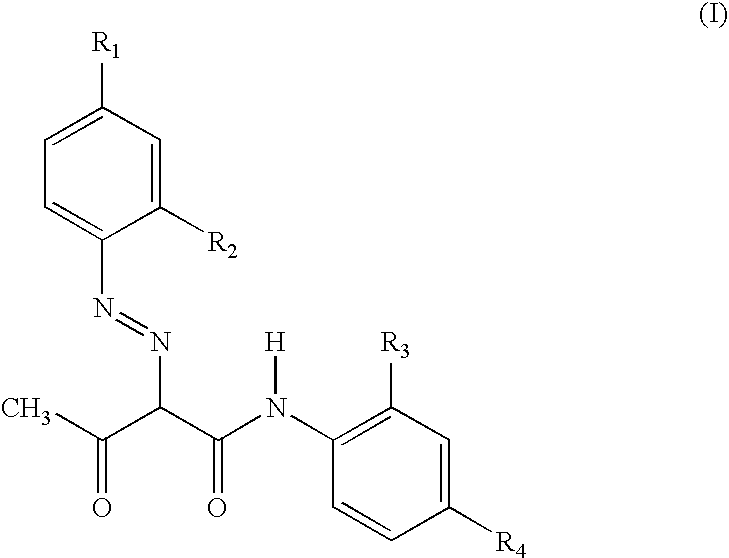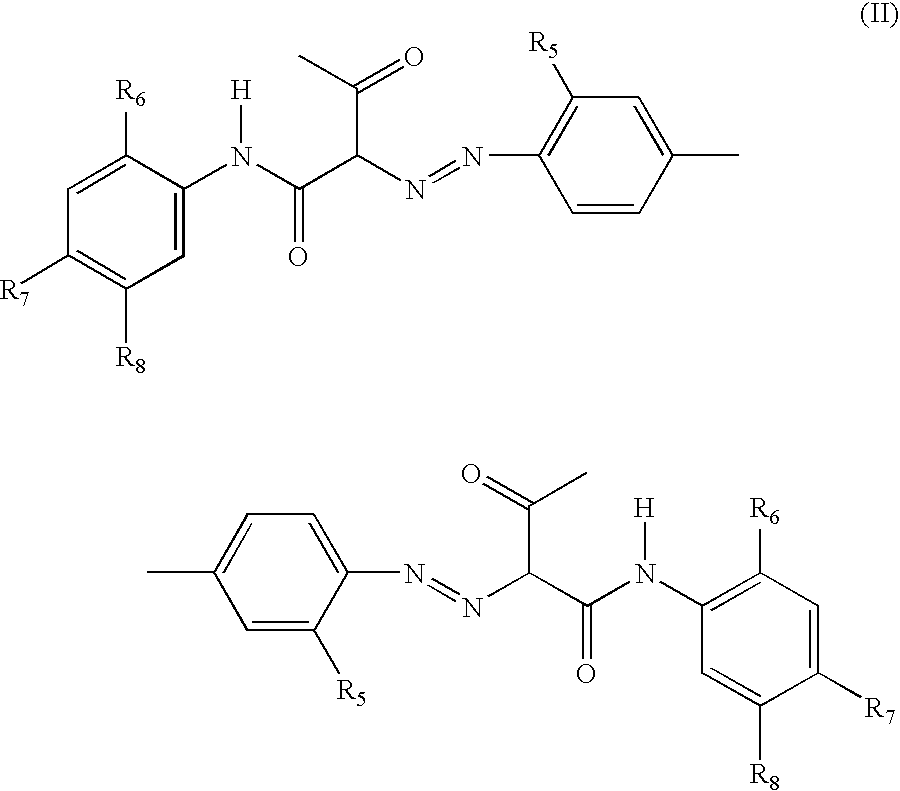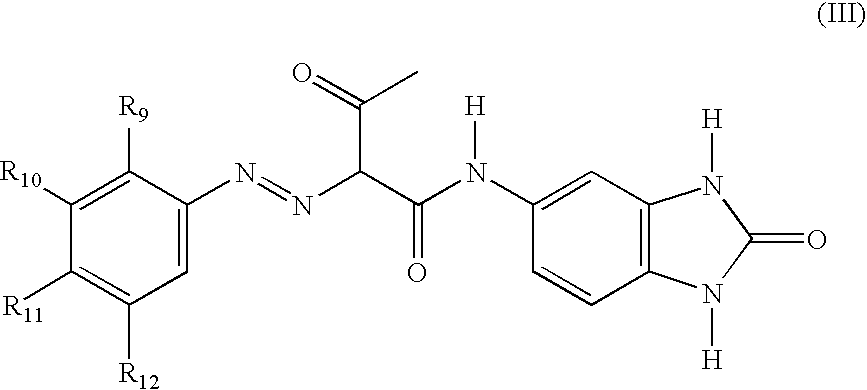Color photographic materials with yellow minimum density colorants
a colorant and color photograph technology, applied in the field of color silver halide photographic materials, can solve the problems of relatively inefficient light absorbers and rather expensive synthesizers, and achieve the effects of reducing production costs, excellent sensitometry, and reducing production costs
- Summary
- Abstract
- Description
- Claims
- Application Information
AI Technical Summary
Benefits of technology
Problems solved by technology
Method used
Image
Examples
example 1
[0131]An oil-in-water dispersion of comparison yellow dye CD-1 in coupler solvent S-1 (tricresylphosphate) at a dye / solvent ratio of 1:0.75 was mixed with additional dispersions of other photographically useful compounds, gelatin, surfactants, and distilled water and was coated on a cellulose acetate butyrate support as Coating 1. Component laydowns are given in mg / m2 in Table I.
[0132]
TABLE ISingle Layer Coating FormatGelatin2400CD-150DYE-125ILS-1125UV-175UV-275H-125
BVSM hardener at 1.75% of total gelatin
BVSM=1,1′-(methylene(sulfonyl))bis-ethane (CAS 3278-22-6)
Chemical structures of materials used in this coating format are given below:
[0133]
[0134]After hardening, samples of each of the films were processed using KODAK Flexicolor C-41 and their status M blue densities were measured.
[0135]Additional experimental coating variations, in which alternative yellow dyes were substituted for YD-1 and coated at 50 mg / m2, are described in Table II below.
[0136]
TABLE IISingle Layer CoatingStatu...
example 2
High Extinction Yellow Dyes in Multilayer Photographic Film
[0139]Multilayer films of this invention were produced by coating the following layers on a cellulose triacetate film support (coverage are in grams per meter squared, emulsion sizes as determined by the disc centrifuge method and are reported in diameter×thickness in micrometers). Surfactants, coating aids, emulsion addenda (including 4-hydroxy-6-methyl-1,3,3a,7-tetraazaindene), sequestrants, thickeners, lubricants and tinting dyes were added to the appropriate layers as is common in the art. Couplers and other non-water soluble materials were added as conventional oil-in-water dispersions as known in the art.
Multilayer Photographic Film Format:
Layer 1 (Antihalation layer): gelatin at 2.01, colloidal metallic silver at 0.300; ILS-1 at 0.160; DYE-2 at 0.067; YD-1 at 0.028; Potassium iodide at 0.007 and a mixture of UV-2 and UV-3 at 0.083 each
[0140]Layer 2 (Slow cyan layer): a blend of two red-sensitized tabular silver iodobr...
PUM
| Property | Measurement | Unit |
|---|---|---|
| particle size | aaaaa | aaaaa |
| particle size | aaaaa | aaaaa |
| mole ratio | aaaaa | aaaaa |
Abstract
Description
Claims
Application Information
 Login to View More
Login to View More - R&D
- Intellectual Property
- Life Sciences
- Materials
- Tech Scout
- Unparalleled Data Quality
- Higher Quality Content
- 60% Fewer Hallucinations
Browse by: Latest US Patents, China's latest patents, Technical Efficacy Thesaurus, Application Domain, Technology Topic, Popular Technical Reports.
© 2025 PatSnap. All rights reserved.Legal|Privacy policy|Modern Slavery Act Transparency Statement|Sitemap|About US| Contact US: help@patsnap.com



